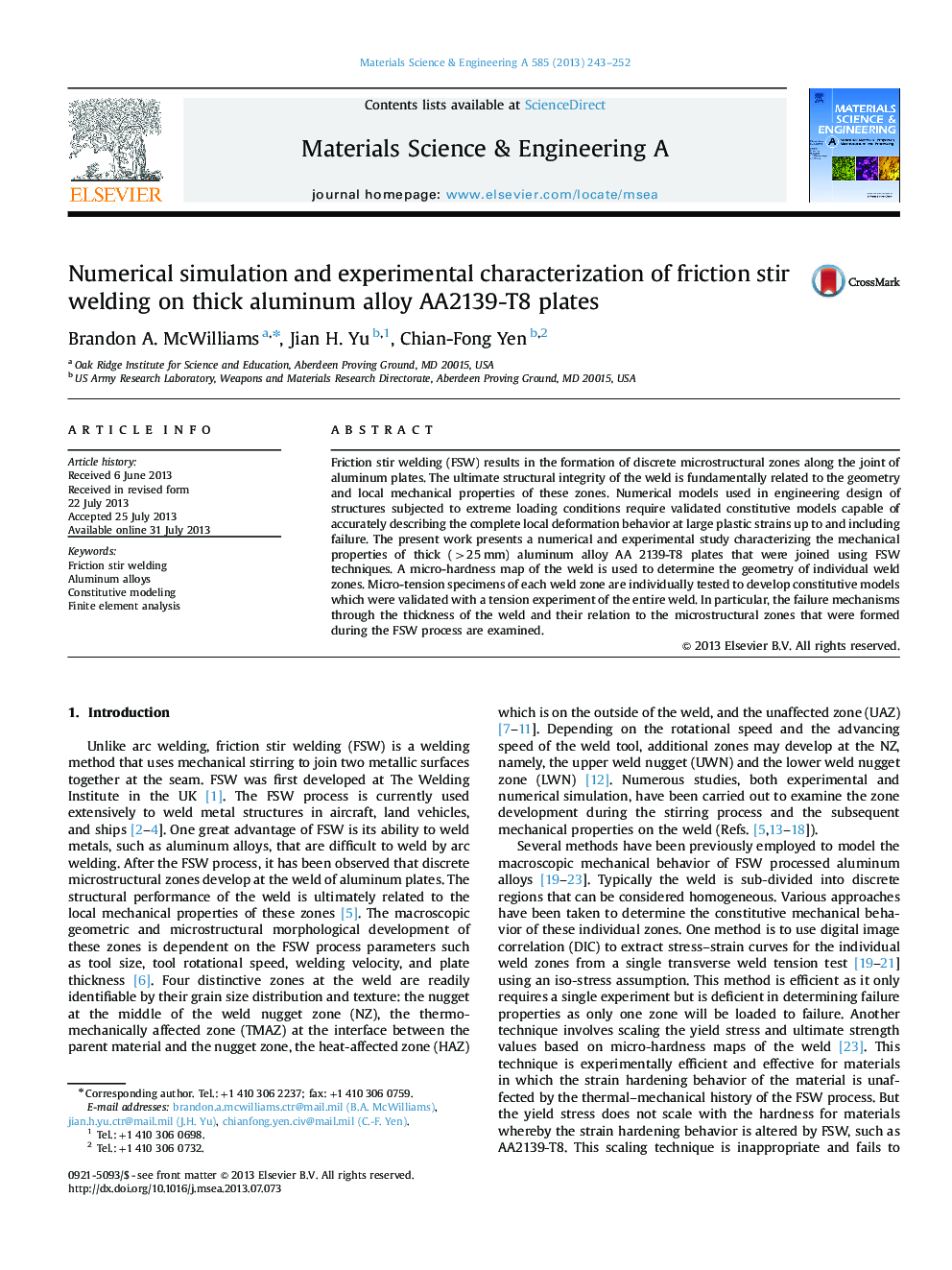| Article ID | Journal | Published Year | Pages | File Type |
|---|---|---|---|---|
| 7982536 | Materials Science and Engineering: A | 2013 | 10 Pages |
Abstract
Friction stir welding (FSW) results in the formation of discrete microstructural zones along the joint of aluminum plates. The ultimate structural integrity of the weld is fundamentally related to the geometry and local mechanical properties of these zones. Numerical models used in engineering design of structures subjected to extreme loading conditions require validated constitutive models capable of accurately describing the complete local deformation behavior at large plastic strains up to and including failure. The present work presents a numerical and experimental study characterizing the mechanical properties of thick (>25Â mm) aluminum alloy AA 2139-T8 plates that were joined using FSW techniques. A micro-hardness map of the weld is used to determine the geometry of individual weld zones. Micro-tension specimens of each weld zone are individually tested to develop constitutive models which were validated with a tension experiment of the entire weld. In particular, the failure mechanisms through the thickness of the weld and their relation to the microstructural zones that were formed during the FSW process are examined.
Related Topics
Physical Sciences and Engineering
Materials Science
Materials Science (General)
Authors
Brandon A. McWilliams, Jian H. Yu, Chian-Fong Yen,
